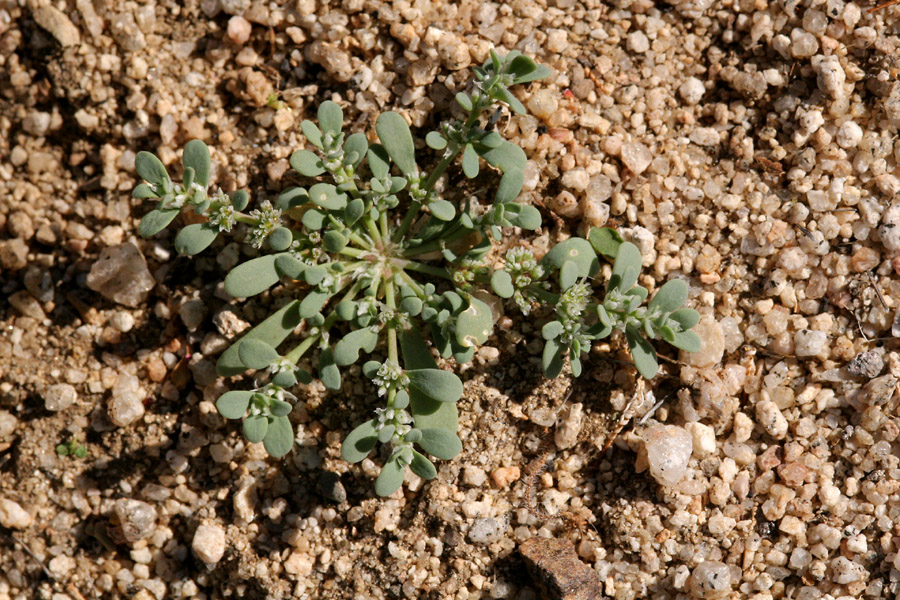|
Family: Caryophyllaceae |
Herbs, annual. Taproots slender. Stems prostrate to ascending, branched, terete to angular, base glabrous. Leaves opposite, connate or connected by thickened ridge or transverse wing from which stipules arise, sessile; stipules 2 per node, white, ovate to spatulate, margins fringed to ciliate, apex ± entire; blade obscurely 1-veined, spatulate, somewhat succulent, apex rounded. Inflorescences axillary cymes proliferating throughout length of stem; bracts paired, resembling stipules, smaller. Flowers sessile; hypanthium cylindric to urceolate, abruptly expanded proximally and distally in fruit; sepals 5, distinct, green, broadly ovate to orbiculate or reniform, 1.2-1.5 mm, herbaceous, margins white, scarious, apex broadly rounded, not hooded, not awned; nectaries at filament bases subtended adaxially by flaps of tissue; stamens 1-4; filaments distinct to base; staminodes 14-19, arising from hypanthium rim, filiform; styles 2, connate in proximal 1/ 2, filiform, 0.2-0.4 mm, glabrous proximally; stigmas 2, linear along adaxial surface of styles, obscurely papillate (50×). Modified utricles obconic, opening by 8 or 10, not spreading, toothlike valves. Seeds tan with red spot near one end, ovoid, slightly laterally compressed, smooth, marginal wing absent, appendage absent; embryo peripheral, straight to slightly curved. |


